Mingyuan Fan
Boosting Gradient Leakage Attacks: Data Reconstruction in Realistic FL Settings
Jun 10, 2025Abstract:Federated learning (FL) enables collaborative model training among multiple clients without the need to expose raw data. Its ability to safeguard privacy, at the heart of FL, has recently been a hot-button debate topic. To elaborate, several studies have introduced a type of attacks known as gradient leakage attacks (GLAs), which exploit the gradients shared during training to reconstruct clients' raw data. On the flip side, some literature, however, contends no substantial privacy risk in practical FL environments due to the effectiveness of such GLAs being limited to overly relaxed conditions, such as small batch sizes and knowledge of clients' data distributions. This paper bridges this critical gap by empirically demonstrating that clients' data can still be effectively reconstructed, even within realistic FL environments. Upon revisiting GLAs, we recognize that their performance failures stem from their inability to handle the gradient matching problem. To alleviate the performance bottlenecks identified above, we develop FedLeak, which introduces two novel techniques, partial gradient matching and gradient regularization. Moreover, to evaluate the performance of FedLeak in real-world FL environments, we formulate a practical evaluation protocol grounded in a thorough review of extensive FL literature and industry practices. Under this protocol, FedLeak can still achieve high-fidelity data reconstruction, thereby underscoring the significant vulnerability in FL systems and the urgent need for more effective defense methods.
Responsible Diffusion Models via Constraining Text Embeddings within Safe Regions
May 21, 2025Abstract:The remarkable ability of diffusion models to generate high-fidelity images has led to their widespread adoption. However, concerns have also arisen regarding their potential to produce Not Safe for Work (NSFW) content and exhibit social biases, hindering their practical use in real-world applications. In response to this challenge, prior work has focused on employing security filters to identify and exclude toxic text, or alternatively, fine-tuning pre-trained diffusion models to erase sensitive concepts. Unfortunately, existing methods struggle to achieve satisfactory performance in the sense that they can have a significant impact on the normal model output while still failing to prevent the generation of harmful content in some cases. In this paper, we propose a novel self-discovery approach to identifying a semantic direction vector in the embedding space to restrict text embedding within a safe region. Our method circumvents the need for correcting individual words within the input text and steers the entire text prompt towards a safe region in the embedding space, thereby enhancing model robustness against all possibly unsafe prompts. In addition, we employ Low-Rank Adaptation (LoRA) for semantic direction vector initialization to reduce the impact on the model performance for other semantics. Furthermore, our method can also be integrated with existing methods to improve their social responsibility. Extensive experiments on benchmark datasets demonstrate that our method can effectively reduce NSFW content and mitigate social bias generated by diffusion models compared to several state-of-the-art baselines.
SkyReels-V2: Infinite-length Film Generative Model
Apr 21, 2025Abstract:Recent advances in video generation have been driven by diffusion models and autoregressive frameworks, yet critical challenges persist in harmonizing prompt adherence, visual quality, motion dynamics, and duration: compromises in motion dynamics to enhance temporal visual quality, constrained video duration (5-10 seconds) to prioritize resolution, and inadequate shot-aware generation stemming from general-purpose MLLMs' inability to interpret cinematic grammar, such as shot composition, actor expressions, and camera motions. These intertwined limitations hinder realistic long-form synthesis and professional film-style generation. To address these limitations, we propose SkyReels-V2, an Infinite-length Film Generative Model, that synergizes Multi-modal Large Language Model (MLLM), Multi-stage Pretraining, Reinforcement Learning, and Diffusion Forcing Framework. Firstly, we design a comprehensive structural representation of video that combines the general descriptions by the Multi-modal LLM and the detailed shot language by sub-expert models. Aided with human annotation, we then train a unified Video Captioner, named SkyCaptioner-V1, to efficiently label the video data. Secondly, we establish progressive-resolution pretraining for the fundamental video generation, followed by a four-stage post-training enhancement: Initial concept-balanced Supervised Fine-Tuning (SFT) improves baseline quality; Motion-specific Reinforcement Learning (RL) training with human-annotated and synthetic distortion data addresses dynamic artifacts; Our diffusion forcing framework with non-decreasing noise schedules enables long-video synthesis in an efficient search space; Final high-quality SFT refines visual fidelity. All the code and models are available at https://github.com/SkyworkAI/SkyReels-V2.
SkyReels-A2: Compose Anything in Video Diffusion Transformers
Apr 03, 2025



Abstract:This paper presents SkyReels-A2, a controllable video generation framework capable of assembling arbitrary visual elements (e.g., characters, objects, backgrounds) into synthesized videos based on textual prompts while maintaining strict consistency with reference images for each element. We term this task elements-to-video (E2V), whose primary challenges lie in preserving the fidelity of each reference element, ensuring coherent composition of the scene, and achieving natural outputs. To address these, we first design a comprehensive data pipeline to construct prompt-reference-video triplets for model training. Next, we propose a novel image-text joint embedding model to inject multi-element representations into the generative process, balancing element-specific consistency with global coherence and text alignment. We also optimize the inference pipeline for both speed and output stability. Moreover, we introduce a carefully curated benchmark for systematic evaluation, i.e, A2 Bench. Experiments demonstrate that our framework can generate diverse, high-quality videos with precise element control. SkyReels-A2 is the first open-source commercial grade model for the generation of E2V, performing favorably against advanced closed-source commercial models. We anticipate SkyReels-A2 will advance creative applications such as drama and virtual e-commerce, pushing the boundaries of controllable video generation.
CCJA: Context-Coherent Jailbreak Attack for Aligned Large Language Models
Feb 17, 2025



Abstract:Despite explicit alignment efforts for large language models (LLMs), they can still be exploited to trigger unintended behaviors, a phenomenon known as "jailbreaking." Current jailbreak attack methods mainly focus on discrete prompt manipulations targeting closed-source LLMs, relying on manually crafted prompt templates and persuasion rules. However, as the capabilities of open-source LLMs improve, ensuring their safety becomes increasingly crucial. In such an environment, the accessibility of model parameters and gradient information by potential attackers exacerbates the severity of jailbreak threats. To address this research gap, we propose a novel \underline{C}ontext-\underline{C}oherent \underline{J}ailbreak \underline{A}ttack (CCJA). We define jailbreak attacks as an optimization problem within the embedding space of masked language models. Through combinatorial optimization, we effectively balance the jailbreak attack success rate with semantic coherence. Extensive evaluations show that our method not only maintains semantic consistency but also surpasses state-of-the-art baselines in attack effectiveness. Additionally, by integrating semantically coherent jailbreak prompts generated by our method into widely used black-box methodologies, we observe a notable enhancement in their success rates when targeting closed-source commercial LLMs. This highlights the security threat posed by open-source LLMs to commercial counterparts. We will open-source our code if the paper is accepted.
Ingredients: Blending Custom Photos with Video Diffusion Transformers
Jan 03, 2025



Abstract:This paper presents a powerful framework to customize video creations by incorporating multiple specific identity (ID) photos, with video diffusion Transformers, referred to as \texttt{Ingredients}. Generally, our method consists of three primary modules: (\textbf{i}) a facial extractor that captures versatile and precise facial features for each human ID from both global and local perspectives; (\textbf{ii}) a multi-scale projector that maps face embeddings into the contextual space of image query in video diffusion transformers; (\textbf{iii}) an ID router that dynamically combines and allocates multiple ID embedding to the corresponding space-time regions. Leveraging a meticulously curated text-video dataset and a multi-stage training protocol, \texttt{Ingredients} demonstrates superior performance in turning custom photos into dynamic and personalized video content. Qualitative evaluations highlight the advantages of proposed method, positioning it as a significant advancement toward more effective generative video control tools in Transformer-based architecture, compared to existing methods. The data, code, and model weights are publicly available at: \url{https://github.com/feizc/Ingredients}.
Video Diffusion Transformers are In-Context Learners
Dec 14, 2024


Abstract:This paper investigates a solution for enabling in-context capabilities of video diffusion transformers, with minimal tuning required for activation. Specifically, we propose a simple pipeline to leverage in-context generation: ($\textbf{i}$) concatenate videos along spacial or time dimension, ($\textbf{ii}$) jointly caption multi-scene video clips from one source, and ($\textbf{iii}$) apply task-specific fine-tuning using carefully curated small datasets. Through a series of diverse controllable tasks, we demonstrate qualitatively that existing advanced text-to-video models can effectively perform in-context generation. Notably, it allows for the creation of consistent multi-scene videos exceeding 30 seconds in duration, without additional computational overhead. Importantly, this method requires no modifications to the original models, results in high-fidelity video outputs that better align with prompt specifications and maintain role consistency. Our framework presents a valuable tool for the research community and offers critical insights for advancing product-level controllable video generation systems. The data, code, and model weights are publicly available at: \url{https://github.com/feizc/Video-In-Context}.
MovieCharacter: A Tuning-Free Framework for Controllable Character Video Synthesis
Oct 28, 2024



Abstract:Recent advancements in character video synthesis still depend on extensive fine-tuning or complex 3D modeling processes, which can restrict accessibility and hinder real-time applicability. To address these challenges, we propose a simple yet effective tuning-free framework for character video synthesis, named MovieCharacter, designed to streamline the synthesis process while ensuring high-quality outcomes. Our framework decomposes the synthesis task into distinct, manageable modules: character segmentation and tracking, video object removal, character motion imitation, and video composition. This modular design not only facilitates flexible customization but also ensures that each component operates collaboratively to effectively meet user needs. By leveraging existing open-source models and integrating well-established techniques, MovieCharacter achieves impressive synthesis results without necessitating substantial resources or proprietary datasets. Experimental results demonstrate that our framework enhances the efficiency, accessibility, and adaptability of character video synthesis, paving the way for broader creative and interactive applications.
FLUX that Plays Music
Sep 01, 2024

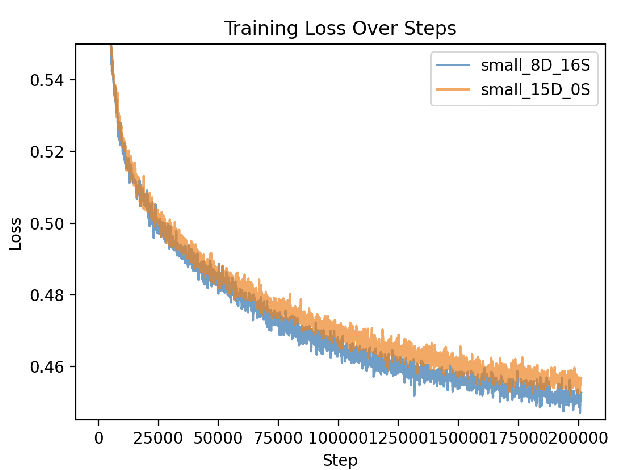

Abstract:This paper explores a simple extension of diffusion-based rectified flow Transformers for text-to-music generation, termed as FluxMusic. Generally, along with design in advanced Flux\footnote{https://github.com/black-forest-labs/flux} model, we transfers it into a latent VAE space of mel-spectrum. It involves first applying a sequence of independent attention to the double text-music stream, followed by a stacked single music stream for denoised patch prediction. We employ multiple pre-trained text encoders to sufficiently capture caption semantic information as well as inference flexibility. In between, coarse textual information, in conjunction with time step embeddings, is utilized in a modulation mechanism, while fine-grained textual details are concatenated with the music patch sequence as inputs. Through an in-depth study, we demonstrate that rectified flow training with an optimized architecture significantly outperforms established diffusion methods for the text-to-music task, as evidenced by various automatic metrics and human preference evaluations. Our experimental data, code, and model weights are made publicly available at: \url{https://github.com/feizc/FluxMusic}.
FedMCP: Parameter-Efficient Federated Learning with Model-Contrastive Personalization
Aug 28, 2024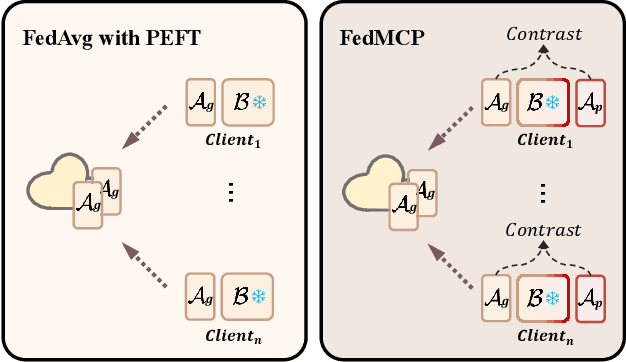
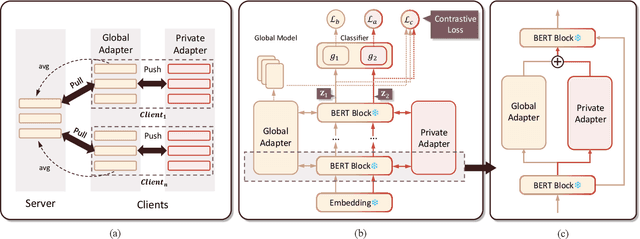
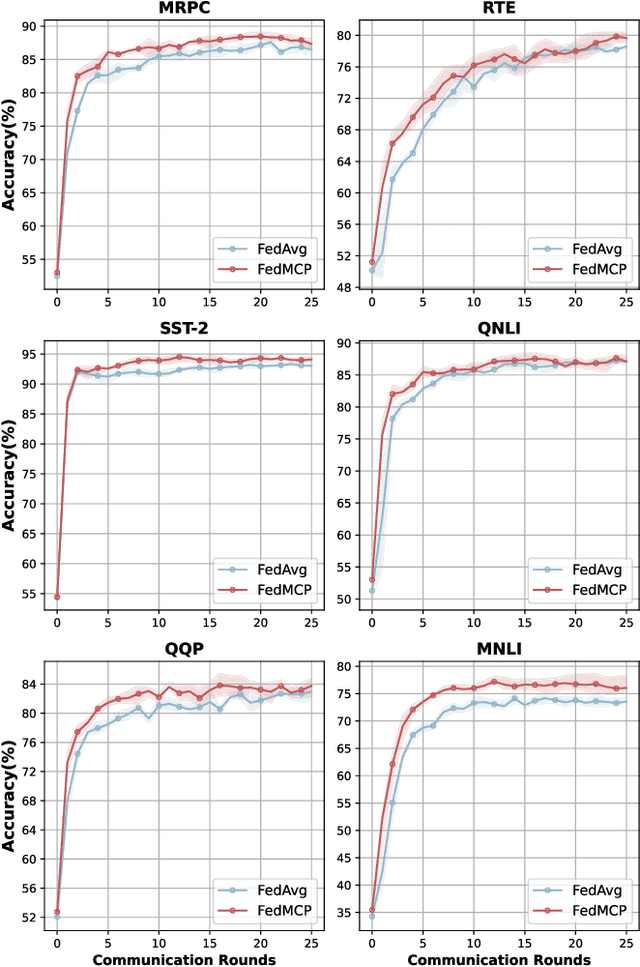
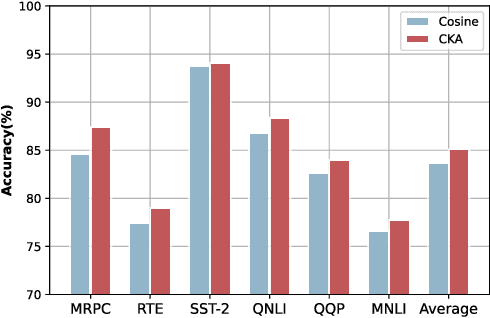
Abstract:With increasing concerns and regulations on data privacy, fine-tuning pretrained language models (PLMs) in federated learning (FL) has become a common paradigm for NLP tasks. Despite being extensively studied, the existing methods for this problem still face two primary challenges. First, the huge number of parameters in large-scale PLMs leads to excessive communication and computational overhead. Second, the heterogeneity of data and tasks across clients poses a significant obstacle to achieving the desired fine-tuning performance. To address the above problems, we propose FedMCP, a novel parameter-efficient fine-tuning method with model-contrastive personalization for FL. Specifically, FedMCP adds two lightweight adapter modules, i.e., the global adapter and the private adapter, to the frozen PLMs within clients. In a communication round, each client sends only the global adapter to the server for federated aggregation. Furthermore, FedMCP introduces a model-contrastive regularization term between the two adapters. This, on the one hand, encourages the global adapter to assimilate universal knowledge and, on the other hand, the private adapter to capture client-specific knowledge. By leveraging both adapters, FedMCP can effectively provide fine-tuned personalized models tailored to individual clients. Extensive experiments on highly heterogeneous cross-task, cross-silo datasets show that FedMCP achieves substantial performance improvements over state-of-the-art FL fine-tuning approaches for PLMs.
 Add to Chrome
Add to Chrome Add to Firefox
Add to Firefox Add to Edge
Add to Edge